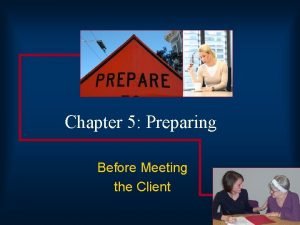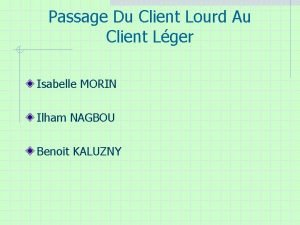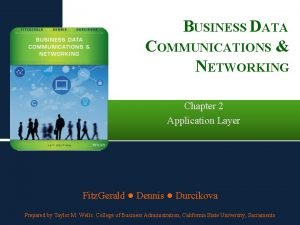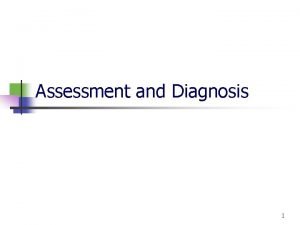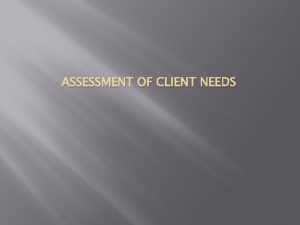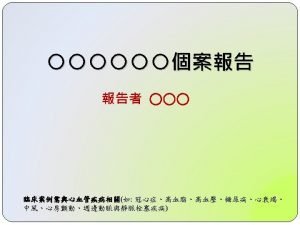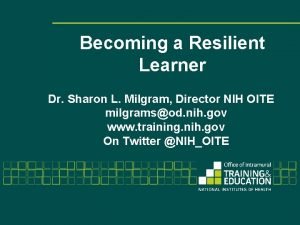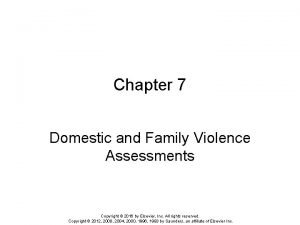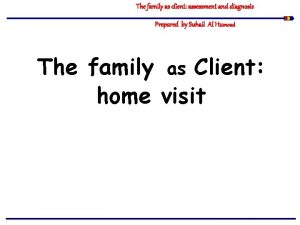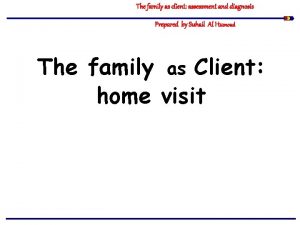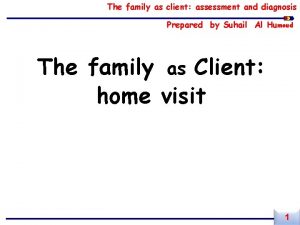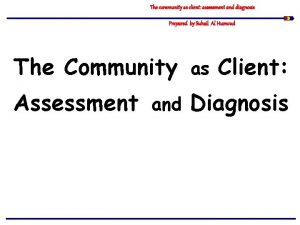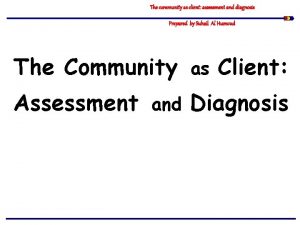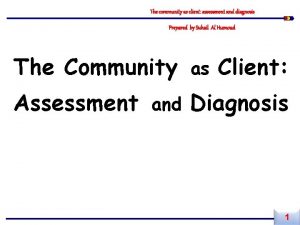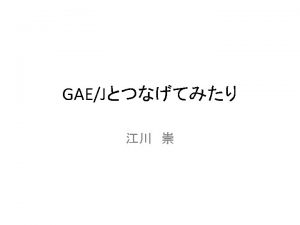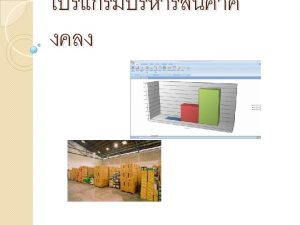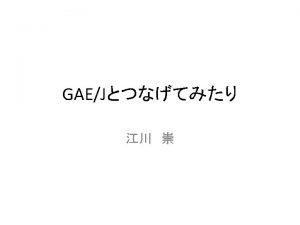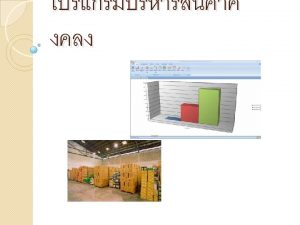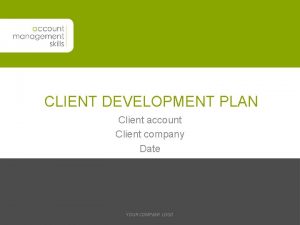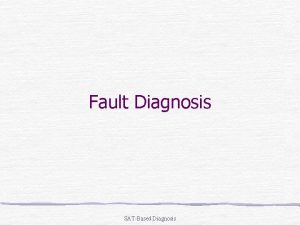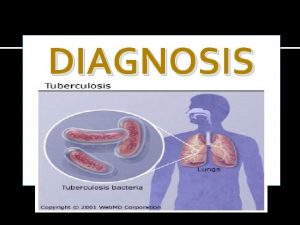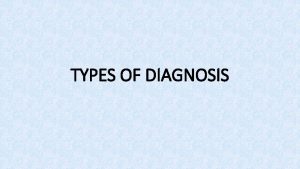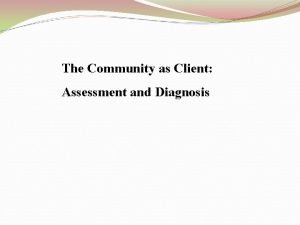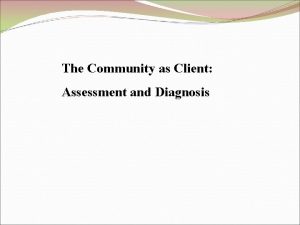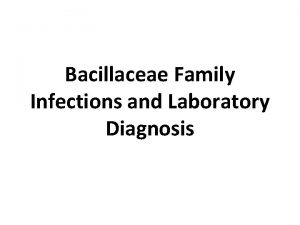The family as client assessment and diagnosis Prepared



























- Slides: 27

The family as client: assessment and diagnosis Prepared by Suhail Al Humoud The family as Client: home visit

The family as client: assessment and diagnosis : objective After completion the lecture the students enable to: 1. Discuss the changes in the health care system that have increased the need for home nurses to practice in community based settings. 5. Discuss how to prepare for a home health care visit and how to conduct the visit. 6. Identify personal safety precautions a home care nurse should take when making home visits. 7. Describe the various types of nursing functions provided in ambulatory care facilities, in occupational health and school nursing programs, and to the homeless.

The family as client: assessment and diagnosis : Introduction Working in a community setting generally involves working with families. CHN must there for understand the interactions and dynamics of families so that they can provide appropriate family assessment , planning, intervention and evaluation

The family as client: assessment and diagnosis : Introduction Family— Families are big, small, parents, and grandparents. We live under one roof or many. A family can be as temporary as a few weeks, as permanent as forever. We become part of a family by birth, adoption, marriage, or from a desire for mutual support. As family members, we nurture, protect, and influence each other. Families are dynamic and are cultures unto themselves, with different values and unique ways of realizing dreams. Together, our families become the source of our rich cultural heritage and spiritual diversity. Each family has strengths and qualities that flow from individual members and from the family as a unit. Our families create neighborhoods, communities, states, and nations.

The family as client: assessment and diagnosis : Introduction Definition Family: is two or more persons related by birth, marriage, or adoption who reside together in a household. The following terms are often used to describe deferent family configurations - nuclear family - Family of origin - Family of procreation - extended family - blended family

The family as client: assessment and diagnosis : Introduction Forms of families 1. Legally married or traditionally married. It’s the only form accepted culturally in our regions 2. Other forms may or may not accepted in our culture an this include - dual-career - foster families - childless by choice - never married - multiadult household - extramarital

The family as client: assessment and diagnosis : Introduction Function of the family a. Affection, love, care, an compassion b. A sense of belonging and of history and place c. Family rituals for rejoicing and grieving d. Systems for earning money , supporting partners and children e. Sharing of labor, chores required to keep the family running

The family as client: assessment and diagnosis : Family Environment Community health nurse should be aware of family environment in assessing the family, that consist: A. Physical environment B. Psychological environment C. Social environment

The family as client: assessment and diagnosis : Physical environment a. housing and the conditions inside, outside and surrounding it b. Any existing safety or environmental hazards c. The amount and quality or services available

The family as client: assessment and diagnosis : Psychological environment a. b. c. d. e. Family dynmics Family strength and weakness Communication skills Family roles Family members ability to cope with change or physical or psychological distress

The family as client: assessment and diagnosis : Social environment a. b. c. d. e. Religious Race or ethnicity Culture Socioeconomic class Resources available such as through school mosque or community outlet

The family as client: assessment and diagnosis : Family assessment For the CHN family assessment includes: 1. How family members function with one anther 2. How family relates to the larger community and 3. Identify family strength as well as weakness Remember when assessing family a. Families have different capacities and capabilities for coping with stressful event b. Vulnerable families are those physical and emotional resources are insufficient to the point that functioning is threatened

The family as client: assessment and diagnosis Vulnerable families have coping mechanisms that tend to distorted or ineffective and do not solve their problems. In fact these mechanisms may further strain their manger resources and let the families used the dysfunctional coping mechanisms a. Denying the problem b. Family violence c. Family myths d. Triangulation

The family as client: assessment and diagnosis 1. Genogram A graphic picture of family history, usually used over three or more generation. The genogram maps such information as/; a. Relationships among family members b. Important life events c. Place of residence d. Characteristics such as race, culture and religious affiliations

The family as client: assessment and diagnosis Family assessment tools 1. Genogram 70 65 Lung cancer heart disease 62 diabetes 48 car 82 breast accident cancer 60 breast cancer

The family as client: assessment and diagnosis 2. Family Health Tree a record of diseases that occur in a family. It can be used to track: a. Diseases that have genetic bases b. Environmental diseases c. Mental health disorders

The family as client: assessment and diagnosis 3. Ecomap A picture of the family’s patterns. Nurses can use an ecomap to identify: a. Family resources that are present b. Family needs c. Conflicts d. Connections that are present or absent balance between e. The balance or lack of a family's needs and the resources available to the family

The family as client: assessment and diagnosis There are two systems of nursing diagnosis a. NA NDA system Uses nursing diagnosis labels b. Omaha system Develop for community health nurses, consist of: 1. Problem classification 2. Intervention 3. Problem rating scale for outcomes

The family as client: assessment and diagnosis Remember: - Planning and intervention for families must be in partnership with family members, not imposed from by CHN - Planning and intervention for families by CHN must used the three level of prevention

The family as client: home visit The goals of primary health nursing are often met through providing health care to families in their home. It can be provided By: a. Visiting nurse association b. Hospice c. Public health departments d. Home health agencies e. School districts

The family as client: home visit Advantages of home visits: A. These visits cost less than hospital care, with better outcomes, especially when chronic health issues are involved. B. Clients have greater control over their health and lives. C. The community health nurse gains access to families to provide health education and other prevention strategies. D. The nurse can observe family and environment factors that influence health. E. Home visits allow for primary intervention, to prevent disease or injury from occurring. F. Home visits facilitate family participation and promote family focus.

The family as client: home visit Disadvantages of home visit A. The nurses skills, personality, or physical ability may not be compatible with providing home visit. B. Home visits are time consuming; travel time is required to get to the persons needing care. C. There is no easy access to emergency equipment or consultation with other health professionals if needed. D. Home visits may present issues regarding the nurse personal safety in some community or family settings. E. The nurse has less control over the care setting (for example, cleanliness, noise, privacy, or distractions).

The family as client: home visit The community health nurse develops objectives for primary, secondary, and tertiary prevention levels, in consultation with the family. To accomplish these objectives, the nurse needs to: Assess clients ability or willingness to comply with treatment directions and/ or change certain behaviors. Anticipate family needs, such as the timing of visits, the need to educate family members, respite care, and so on.

The family as client: home visit Community health nurse bag • Requirements include equipment for basic assessment, medical asepsis, and waste disposal. • These precautions must be followed to avoid contamination from blood, body secretions, excretions, or contaminated items. - Wash hands - Use gloves. - Wear eye and face protection - Wear gown - Handle client care equipment carefully. - Clean environmental surfaces. - Use proper sharps disposal container.

The family as client: home visit The community health nurse doing home visits usually works as part of a home health care team that can includes social workers, rehabilitation specialists, and home health nurses or aides. Cooperation and communication with other care providers are essential.

The family as client: home visit The three most common intervention in home health care include: a. Helping families deal with stress created by health problems. b. Making referrals for community services. c. Teaching and educating clients, with the focus on strengths rather than weakness.

The family as client: home visit Evaluation is the ongoing process that continually assesses clients progress toward expected outcome. Termination of home visits occurs when both client and nurse are satisfied that goals have been met or that appropriate referrals have made. Telemedicine: which use phone and computer technologies to monitor clients and provide care without the nurse making a home visit.
 Preparatory empathy social work
Preparatory empathy social work Research conclusion example
Research conclusion example Define nursing process
Define nursing process Medical diagnosis and nursing diagnosis difference
Medical diagnosis and nursing diagnosis difference Medical diagnosis and nursing diagnosis difference
Medical diagnosis and nursing diagnosis difference Medical diagnosis and nursing diagnosis difference
Medical diagnosis and nursing diagnosis difference Perbedaan diagnosis gizi dan diagnosis medis
Perbedaan diagnosis gizi dan diagnosis medis Vmatrix server manager
Vmatrix server manager Linux leger
Linux leger Example of two tier architecture
Example of two tier architecture The world of food and beverages chapter 4
The world of food and beverages chapter 4 Introduction about family
Introduction about family Assessment for diagnosis
Assessment for diagnosis Social work assessment questions example
Social work assessment questions example Client needs assessment
Client needs assessment Assessment of client data
Assessment of client data Why is carcase meat prepared into cuts joints and mince
Why is carcase meat prepared into cuts joints and mince A carefully prepared and rehearsed speech
A carefully prepared and rehearsed speech Prepared and resilient learner
Prepared and resilient learner Difference between nuclear family and joint family
Difference between nuclear family and joint family Routine, universal screening for domestic violence means: *
Routine, universal screening for domestic violence means: * Hát kết hợp bộ gõ cơ thể
Hát kết hợp bộ gõ cơ thể Ng-html
Ng-html Bổ thể
Bổ thể Tỉ lệ cơ thể trẻ em
Tỉ lệ cơ thể trẻ em Gấu đi như thế nào
Gấu đi như thế nào Glasgow thang điểm
Glasgow thang điểm Chúa yêu trần thế
Chúa yêu trần thế
